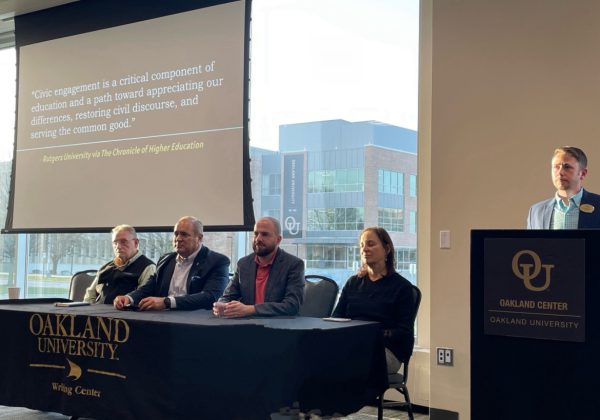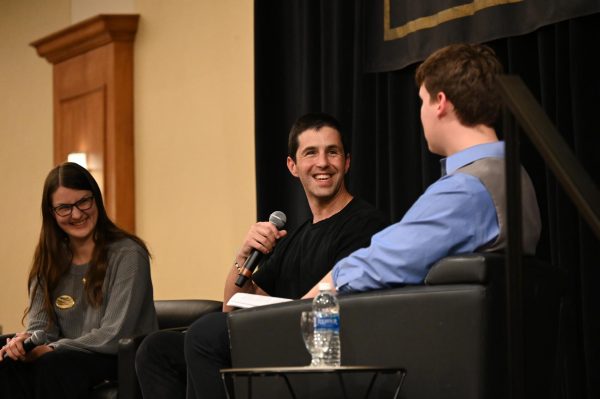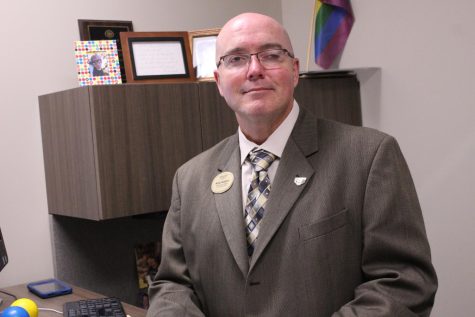How close to home is drug abuse?
Why do people misuse drugs? Whether through anecdotes, personal research, television, radio, social media or even our tried-and-true high school health class, almost everyone has at least heard of the dangers of mistreating drugs. The infamous opioid epidemic is fusing through the country and even weaving its way into Michigan communities.
According to Michigan’s 2016 Licensing and Regulation Affairs Report, Oakland University’s zip code, 48309, was subject to abnormalities regarding prescribed opioids.
For instance, in 2016 Rochester’s population was 29,414, but some opioids surpassed this number by thousands. How could the entire demographic of an area become a minimal number compared to circulating substances?
Members of A Chance to Change Drug and Alcohol Testing are beginning to address the confusion surrounding recent opioid subscription records, but specific actions are still formulating while people consider the drug epidemic.
The status of heavily prescribed drugs introduces a second potentially difficult point to swallow. Moreover, the report mentioned several category 5 opioids, the highest degree of substance strength, have been legally welcomed at staggering amounts.
Guaifenesin AC, for instance, is a schedule 5 drug and has 99 prescriptions in the area, resulting in a shocking 28,513 units. Substances with high possibility of reliance are not uncommon, and individuals may simply not be aware of repercussions. Hence, people could develop an increasing need for drugs, which create incredibly high rates of unit circulation.
According to the Department of Health and Human Services, “In the late 1990s, pharmaceutical companies reassured the medical community that patients would not become addicted to opioid pain relievers and healthcare providers began to prescribe them at greater rates.”
This overprescription of misunderstood drugs has led to an overall greater risk of misuse of pain relieving drugs, which has come to be called the opioid epidemic.
In fact, there are Oakland students who are struggling with a dependence on prescribed drugs, but legal drug use seems to be bypassed because of its usual acceptance. However, any dependence on a substance shouldn’t be swept under the table when thousands of people just in our zip code are possibly invisibly struggling, solely because prescribed drug use isn’t seen as wrong.
“I struggled to go to sleep without it,” said an OU sophomore prescribed with a schedule 4 drug. “I had to talk to my therapist about it, and she suggested transitioning into other avenues because it wouldn’t concentrate my full attention. If I didn’t have an outside source to discuss my dependency I would’ve struggled to find another outlet.”
This is not an abnormal perspective either. In the past twelve months, 91.6 percent of OU students had felt overwhelmed by all they had to do at some point compared to 87 percent nationally, according to the National College Health Assessment given to OU undergraduates last spring. The National College Health and Assessment also conveyed that 15.5 percent of OU students used prescription drugs without a prescription, compared to 12.5 percent nationally.
OU offers several options on campus to focus on mental health if needed. The OU Counseling Center provides free counseling for students with any variety of struggles. Additionally, the Department of University Recreation and Well-Being has an array of programs that support stress management. If any student is interested in exploring these options, this help line allows more open discussion of these topics.
“As a university, we are helping young adults learn in the classroom and prepare for life after college,” said Erica Wallace, Coordinator of Health and Wellness. “Part of that is having to give them the freedom to make choices while providing resources that can set them up for success.”
While most are still navigating mental health and reliance on drugs, at least introducing the discussion and normalizing it could help countless people.











